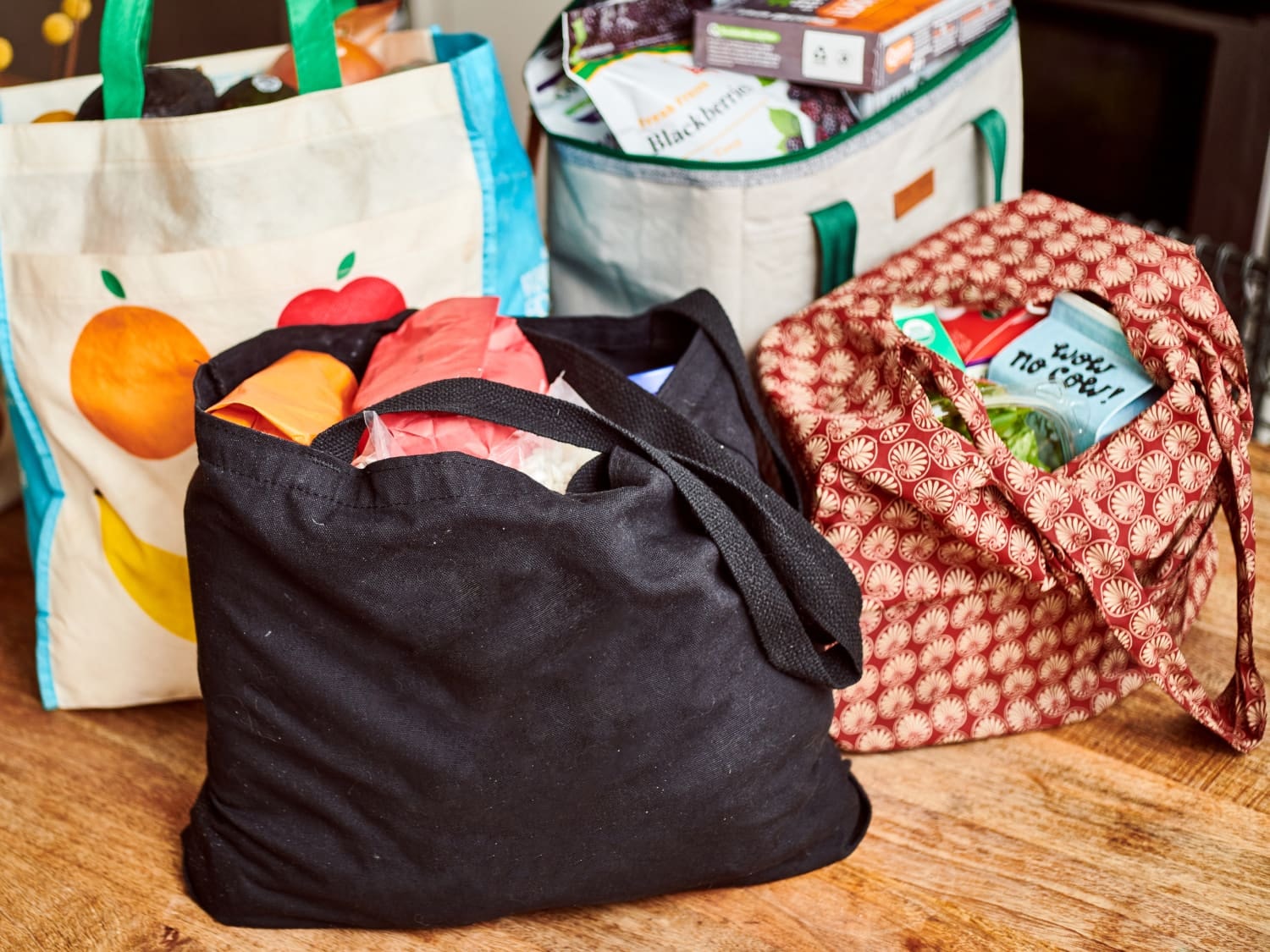
Plastic bags break easily and harm the environment. Non-disposable grocery bags are a durable option for everyday grocery shopping. Whether you’re a shopper or a brand, investing in a reusable bag means less waste, more convenience, and better style.
Reusable bags can significantly reduce waste; an average family uses nearly 1,500 plastic bags per year. Single-use plastic bags often tear, spill food, or end up in the landfill. That’s a big reason to make the switch. With better materials like nylon and polyester, you get a shopping bag that’s lightweight, durable, and easy to tuck into a purse or car.
In this guide, we will share the best types of reusable bags, including lightweight, flat, and insulated choices. We explore top materials, smart features like zippers and space-saving designs, and how a well-made bag helps avoid spills, tears, and waste.
What Are Reusable Grocery Bags?
Reusable grocery bags are bags made to be used again and again. These bags offer a durable option for daily grocery shopping. To be effective, a reusable grocery bag must be strong, washable, and built to last. It should carry weight without breaking and handle spills like milk or food with simple spot cleaning.
Reusable grocery bags come in many materials, each with its own use:
| Material | Key Features |
|---|---|
| Cotton / Organic Cotton | Breathable, natural, and ideal for carrying food items |
| Jute / Hemp | Strong fabric, eco-friendly, natural texture |
| Recycled PET | Made from recycled plastic bottles, sustainable |
| Woven / Non-Woven Polypropylene | Lightweight, affordable, and commonly used in stores |
| Nylon / Polyester Bags | Foldable, water-resistant, easy to pack and carry |
Each material offers a different level of durability and style. Whether you want a flat tote or a foldable nylon bag, reusable grocery bags help reduce plastic waste while offering a better shopping experience.
Benefits of Fabric Reusable Shopping Bags
Reusable fabric shopping bags are more than just a trend. They’re a reliable, durable option that meets the daily needs of modern shoppers. Designed to handle repeated grocery trips, they offer lasting value in both form and function.
1. Durability You Can Trust
Unlike plastic bags that tear under pressure, fabric reusable grocery bags are built for strength. Materials like nylon, polyester, cotton, and hemp offer high resistance to wear and tear. You can carry heavy grocery items like milk, eggs, and canned food without worrying about the bag splitting or handles breaking.
2. Reusable and Washable
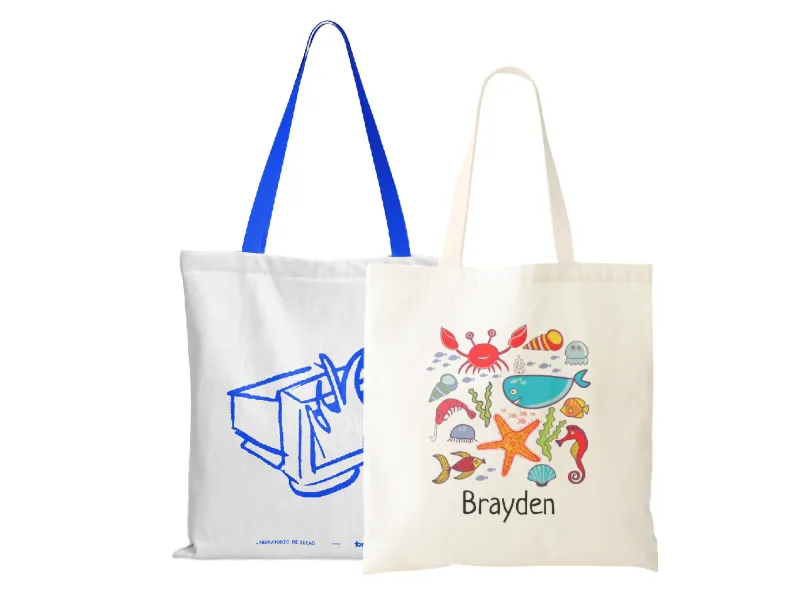
Hygiene matters, especially when you’re using the same bag every week. Most reusable grocery bags allow for quick spot cleaning, while many cotton and polyester bags are fully washable. This makes it easy to clean up after a spill or sticky mess, helping prevent odors and stains over time.
3. Compact and Travel-Friendly
Fabric bags made from nylon and polyester often come in foldable styles. You can roll or fold them into a smaller version, then tuck them into a purse, backpack, or glove compartment. This makes them ideal for those who often forget to bring a bag to the store.
4. Comfortable to Carry
Reusable bags are designed with wider straps, better weight distribution, and stronger stitching, making them more comfortable to carry, even when full. Some bags feature padded handles or reinforced straps that don’t dig into your shoulder, unlike thin plastic ones.
5. Versatile Functionality
A reusable shopping bag is not limited to grocery shopping. Many people use them for food delivery, travel, gym gear, or even as a casual tote. Some models come with zippers, extra compartments, or insulation to keep items cool, making them perfect for carrying fresh produce or cold drinks.
6. Better for the Planet
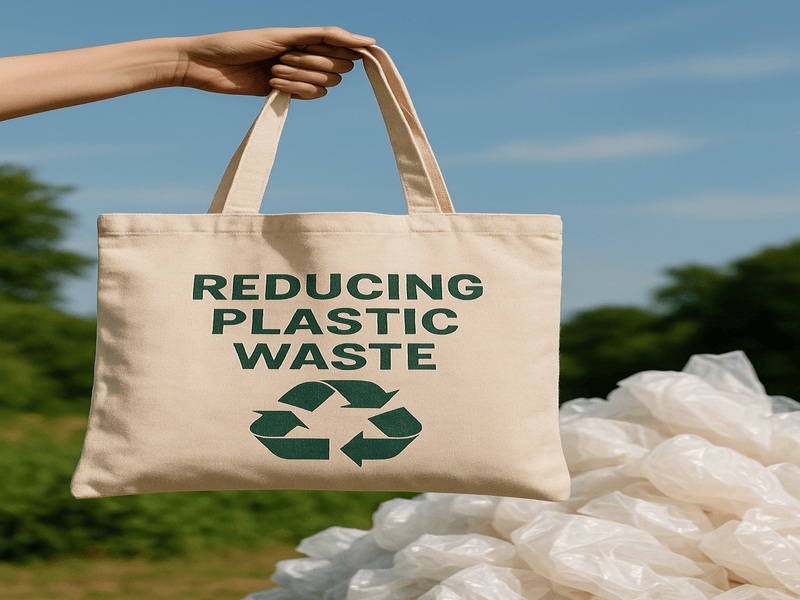
Using fabric reusable bags directly reduces the number of single-use plastic bags in circulation. One high-quality bag can replace hundreds of plastic bags over its lifetime, lowering the amount of waste sent to the landfill. It’s a small step with a big impact on the environment.
7. A Smart Choice for Businesses
Reusable bags also make sense for brands and grocery stores. A logo printed on a durable bag provides repeated visibility and builds a positive image. Buyers are more likely to reuse a bag if it’s stylish, convenient, and easy to pack. This creates a better customer experience while showing your commitment to sustainability.
Each bag supports a cleaner environment and offers real everyday value
Top 7 Best Reusable Grocery Bag Types
Below are seven of the most effective and commonly used reusable grocery bag types; each offering unique benefits based on material, design, and intended use.
Cotton Tote Bags
Cotton tote bags are a reliable and eco-friendly choice. Made from natural fibers, they are biodegradable and safe for carrying food items. Their soft structure makes them easy to fold and store, while their strength supports regular grocery loads.
These bags are highly favored by brands for promotional purposes, as they are easy to customize with logos or designs. Their clean, minimal look and long lifespan make them suitable for everyday shopping, events, and retail packaging.
Organic Cotton Tote Bags
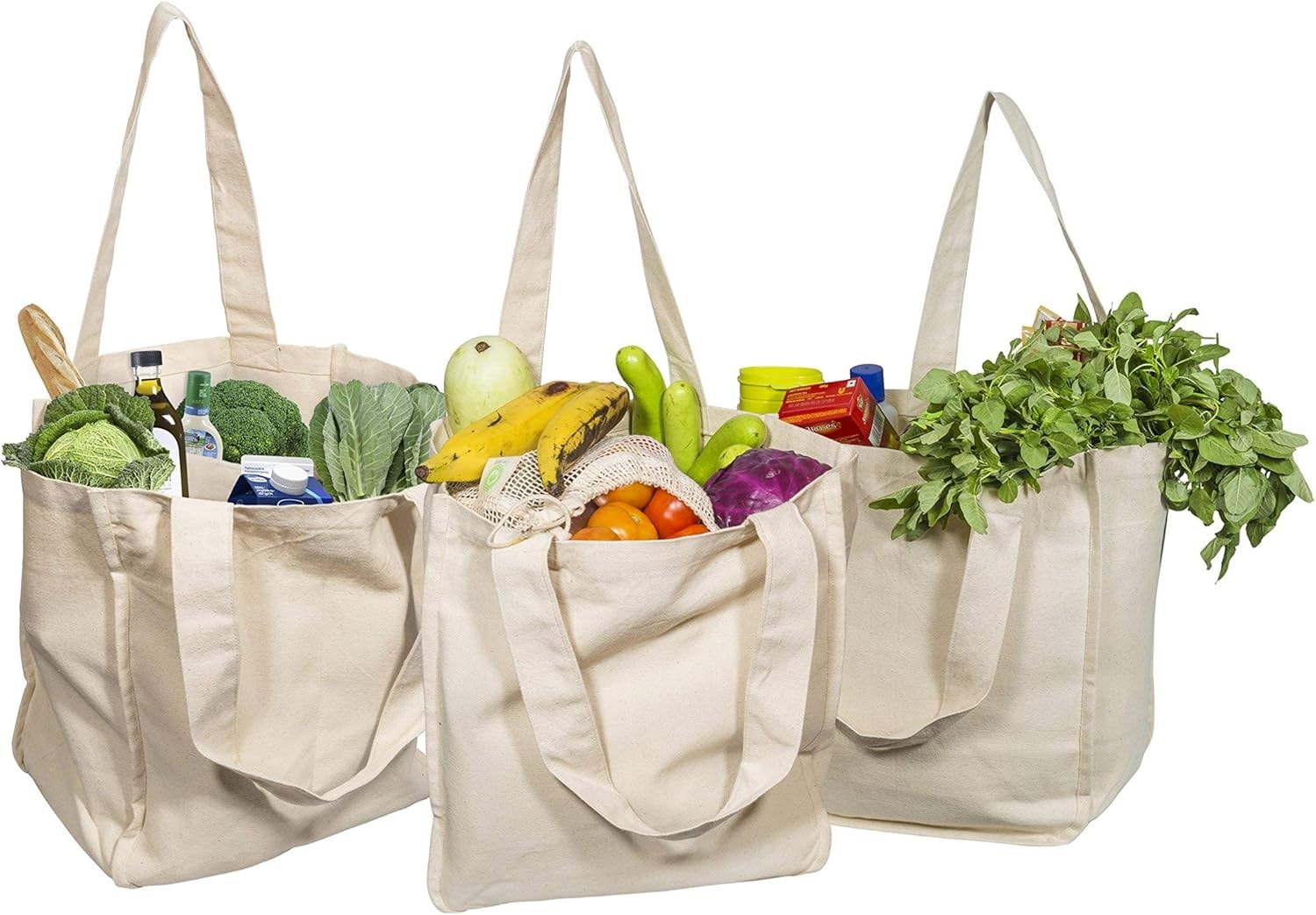
Organic cotton tote bags offer all the benefits of traditional cotton bags but with an added layer of sustainability. Grown without synthetic fertilizers, pesticides, or GMOs, organic cotton is gentler on the environment and safer for consumers.
When certified by global standards like GOTS (Global Organic Textile Standard), these bags guarantee eco-friendly and ethical production from farm to factory.
Their clean, natural look pairs well with eco-conscious branding, and their certified organic status is a selling point for health stores, ethical retailers, and green lifestyle brands. Though slightly more expensive, organic cotton bags offer unmatched credibility in the sustainable product space.
Jute and Hemp Bags
Jute and hemp bags offer a strong, structured alternative to softer fabric options. These plant-based materials are durable, sustainable, and naturally biodegradable. Their coarse texture and earthy appearance appeal to environmentally conscious shoppers.
Thanks to their rigid design and load-bearing capacity, jute and hemp bags are especially useful for carrying produce, jars, and other weighty items. They are commonly seen in organic markets and specialty grocery stores.
Recycled PET (rPET) Bags
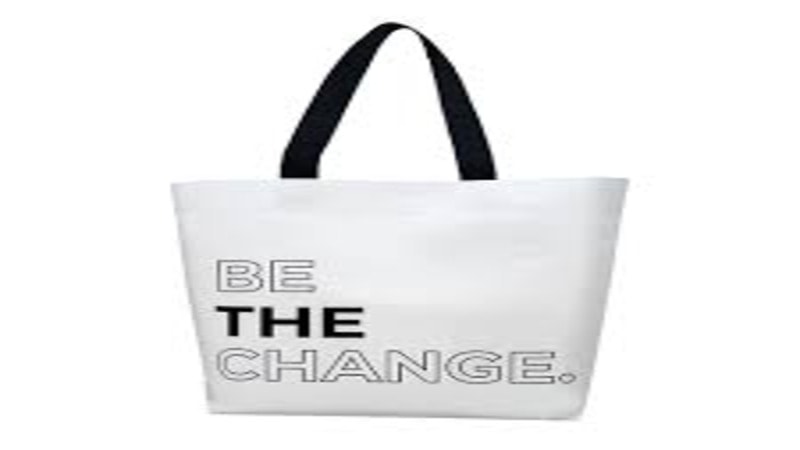
Recycled PET bags are manufactured using plastic bottles, transforming waste into reusable shopping solutions. The material is smooth, durable, and resistant to moisture making it suitable for cold or wet grocery items such as dairy, drinks, and frozen foods.
These bags offer the advantage of sustainability without compromising on functionality. Their modern look, structured build, and environmental value make them a smart option for brands and consumers alike.
Non-Woven Polypropylene Bags
Non-woven polypropylene bags are widely used due to their affordability and practical design. Though lightweight, they provide sufficient support for daily grocery shopping and are often distributed by supermarkets and large retailers.
The fabric allows for full-color printing, making it an excellent choice for brand promotion. These bags are breathable, reusable, and typically offered in bulk for events or marketing campaigns.
Woven Polypropylene Bags
Woven polypropylene bags are made by weaving strands of polypropylene plastic, resulting in a strong and durable structure. Unlike non-woven counterparts, these bags have a firmer, more rigid texture. Their water-resistant quality also helps protect groceries from spills or damp conditions.
These bags are commonly used in supermarkets and wholesale clubs. Woven PP bags are easy to clean and often feature vibrant, laminated prints.
Foldable Nylon Bags
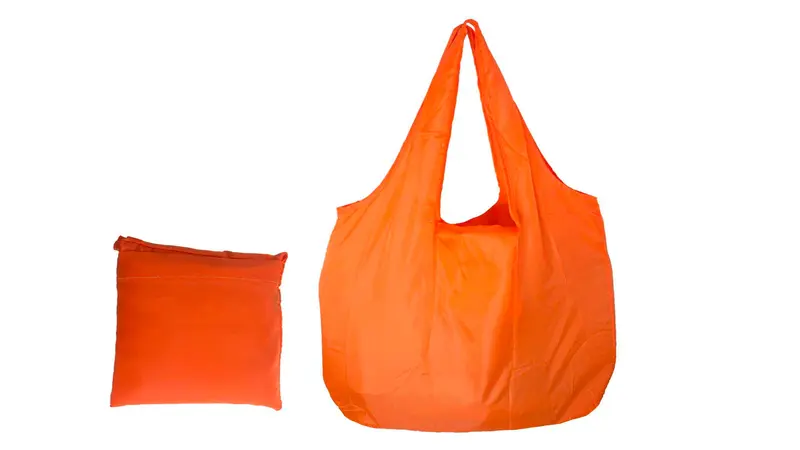
Foldable nylon bags are designed for portability and ease of use. They fold down into a compact size, allowing users to carry them in a purse, pocket, or car for unexpected needs. Despite their lightweight feel, they are strong enough to hold daily grocery items.
These bags are water-resistant, tear-resistant, and ideal for personal reuse. Their convenience makes them perfect for commuters, travelers, and anyone looking for a backup bag while on the go.
Each reusable grocery bag type serves a specific purpose. From the rustic appeal of jute to the sleek functionality of recycled PET, your choice should reflect your priorities; be it sustainability, branding, portability, or cost-effectiveness.
Custom Logo Options for Businesses
As consumers become more environmentally conscious, reusable grocery bags provide a powerful branding opportunity. Customizing reusable bags with a company logo allows businesses to reach new audiences while reinforcing their commitment to the environment.
Why Branding Reusable Bags Works
In today’s market, customers expect brands to act responsibly. Offering a reusable shopping bag with your logo shows you care about sustainability—and gives your brand daily exposure.
When customers use your bag in grocery stores, on commutes, or at work, they’re promoting your brand organically. Unlike short-lived ads, these bags continue working every time they’re carried. This combination of utility and visibility builds brand recognition and supports long-term customer loyalty.
Printing Methods for Logo Customization

Choosing the right printing technique ensures your logo looks sharp and stays intact through repeated use.
- Screen printing is a reliable choice for bold logos and single-color designs. It’s cost-effective for bulk orders and performs well on cotton or polypropylene bags.
- Heat transfer printing offers better detail and is suitable for complex, full-color logos. It works well on smooth surfaces like polyester or rPET.
- Embroidery, though more premium, gives a refined and textured look. It’s best for cotton tote bags and is often used by boutiques or upscale brands seeking a more polished image.
Each method has its strengths, and selecting the right one depends on your brand’s goals, artwork complexity, and material type.
Logo Placement Tips
Where you place your logo affects both visibility and brand perception. Strategic placement ensures your message reaches its audience clearly and effectively. The front center panel is the most common and visible location. It places your brand at the focal point every time the bag is used.
The side gusset allows for a more subtle touch, suitable for additional messaging or a website URL.
Some businesses also use the handle area or inner pocket flap to add brand elements or sustainability slogans without overwhelming the main design.
Adding your website, QR code, or a short message such as “Reusable. Reliable. Responsible.” can reinforce your brand’s values while maintaining a clean and professional look.
A Smart Investment for Business Growth
Reusable bags with custom logos offer excellent return on investment. They combine practical function with marketing reach, all while supporting a cause that resonates with today’s buyers.
For small businesses, they’re a cost-effective giveaway. For larger brands, they’re a way to align marketing with environmental impact. In both cases, the result is stronger customer engagement, brand recall, and a visible commitment to reducing single-use plastic.
By investing in branded reusable bags, your business stays relevant, visible, and responsible.
How to Choose the Right Reusable Bag
Selecting the ideal reusable grocery bag requires more than just picking a material. Your choice should align with your goals, whether you’re a retailer, brand, or organization. Below are the key factors to consider when choosing the right bag for your purpose.
Purpose: Shopping, Events, or Resale
Understanding how the bag will be used is the first step. If you’re choosing a bag for grocery shopping, you’ll need something durable and spacious, like a cotton tote or recycled PET bag. For events or giveaways, lightweight options such as non-woven polypropylene or foldable nylon work well.
For resale or branded merchandise, higher-end materials like organic cotton or jute with custom finishes may be more appropriate. The intended use will guide the size, structure, and finish of your bag.
Brand Image: Natural, Sleek, or Rugged
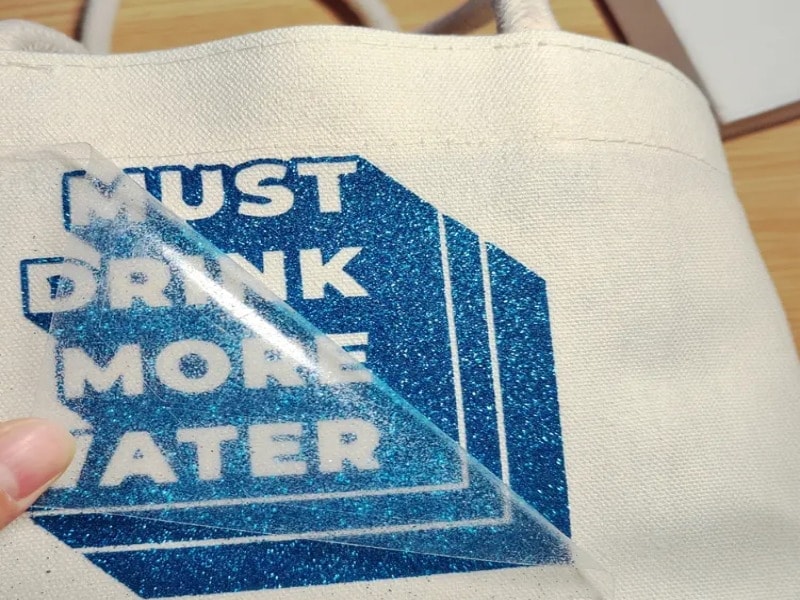
Your bag should reflect your brand’s personality. Eco-conscious brands often choose organic cotton or jute to project a natural, earthy image. A modern or tech-oriented business may lean toward recycled polyester or nylon for a sleeker, more refined appearance.
For a more rugged or outdoorsy look, hemp or heavyweight canvas may be ideal. The material, color, and finish all contribute to how your brand is perceived by customers.
Quantity and Minimum Order (MOQ)
Order size affects pricing and customization flexibility. For small campaigns, limited edition runs, or niche promotions, a lower MOQ (minimum order quantity) might be needed.
However, bulk ordering typically brings cost advantages, especially if you’re planning large-scale distribution. Understanding your quantity needs in advance ensures you choose a supplier that can match your volume and timeline.
Budget: Balancing Quality and Customization
Cost should reflect both functionality and brand value. Budgeting for reusable bags involves finding the right balance between material quality, print options, and quantity.
While lower-cost bags serve well for short-term promotions, investing slightly more in higher-quality bags improves durability, customer satisfaction, and brand perception. Always consider the long-term return when evaluating pricing.
Choosing the right reusable bag is about aligning form with function. By carefully evaluating these factors, you ensure your bag performs well, represents your brand effectively, and supports your sustainability goals.
Maintenance and Care Tips for Reusable Grocery Bags
Reusable grocery bags are designed to last, but like anything used regularly, they need proper care. Following simple cleaning and storage steps can help extend their life and keep them safe for daily use. Here’s how to take care of your bags based on their material.
Washing Instructions by Material
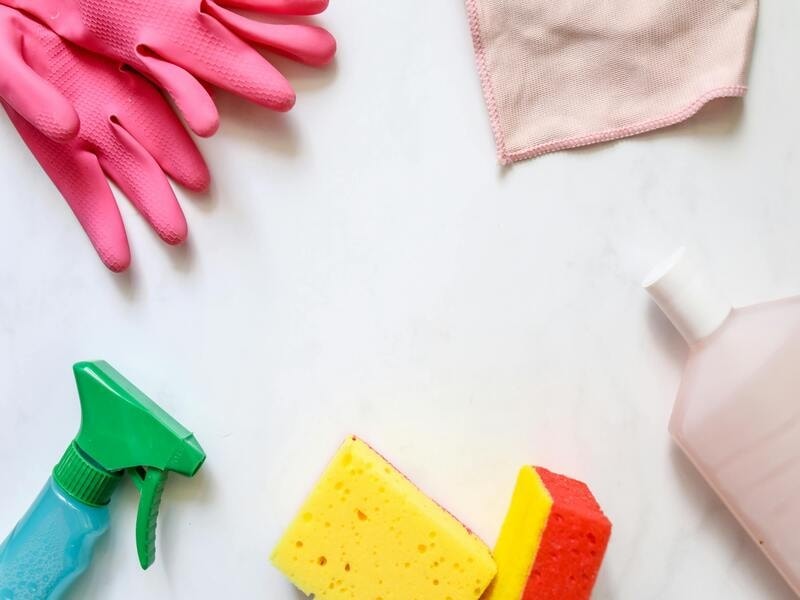
Different bag materials require different cleaning methods. Here’s how to care for each type:
- Cotton and Organic Cotton Bags
These are easy to maintain. You can toss them in the washing machine with cold water and a mild detergent. Let them air dry fully before folding or storing. Avoid high heat, as it may shrink the fabric. - Jute and Hemp Bags
Due to their coarse texture and natural fibers, jute and hemp bags are best cleaned with a damp cloth. Spot-clean stains gently, and avoid soaking the bag to prevent distortion or mildew. Always dry them completely before storage. - Recycled PET (rPET) Bags
These bags should not be machine-washed. Instead, wipe them clean with a damp cloth and mild soap. Avoid hot water or prolonged exposure to heat to maintain their shape and structure. - Non-Woven and Woven Polypropylene Bags
These can be cleaned by wiping with a sponge or soft cloth. A gentle cleanser or soap is fine. Don’t put them in the washing machine, and avoid dryers—they may warp or damage the bag. - Foldable Nylon and Polyester Bags
Lightweight and water-resistant, these bags are simple to clean. You can hand-wash or use a gentle cycle in the machine. Hang them to dry and store only once fully dry.
Storage Tips to Prolong Life
Proper storage keeps your bags in top condition and ready to use.
- Always empty your bag after use.
- Store bags in a cool, dry place to prevent moisture buildup and mold.
- Avoid keeping them in direct sunlight for extended periods, which can fade colors and weaken fabrics.
- Fold bags neatly or hang them to save space and prevent wrinkles or strain on the seams.
How to Repair Minor Damage
Small tears or loose handles don’t mean the end of a bag’s life. With a little effort, most damage can be easily fixed.
- For small holes or tears, hand-stitch with a strong thread. You can also use an iron-on or sew-on fabric patch.
- If the straps come loose, reinforce them by stitching through the original seam and extending slightly beyond for added strength.
- Worn corners or edges can be patched with durable scrap fabric and fabric glue or by sewing directly onto the worn area.
By caring for your reusable grocery bags, you not only reduce waste but also save money and maintain hygiene. A few simple habits go a long way in making your eco-friendly bags last longer and work better.
The Bigger Picture: How Non-Disposable Bags Support Sustainability
Non-disposable bags are a statement. By choosing and promoting them, individuals and communities take real steps toward reducing waste, protecting ecosystems, and shaping a cleaner, more conscious future.
Reducing Microplastics at the Source
Single-use plastic bags are a major source of microplastic pollution. As they break down, they fragment into tiny plastic particles that contaminate water, soil, and even food chains. Switching to reusable bags made from fabric, jute, or recycled materials helps cut off this pollution at its source. With fewer disposable bags entering circulation, there’s a direct reduction in the plastic waste that contributes to microplastic buildup.
Promoting a Zero-Waste Lifestyle
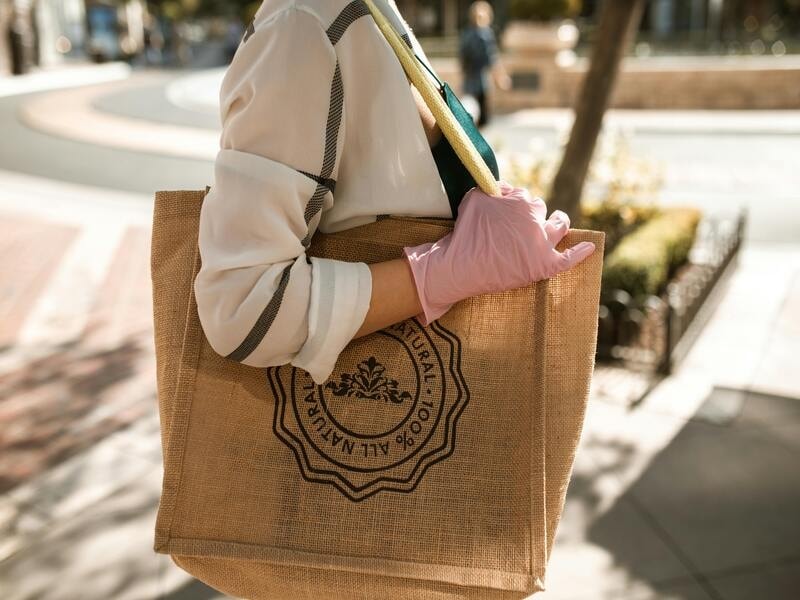
Reusable bags act as a simple gateway into a zero-waste mindset. Carrying your own bag encourages other conscious habits like avoiding plastic packaging, buying in bulk, and reducing single-use items. Whether it’s a foldable nylon tote or a sturdy organic cotton bag, these small changes add up. They shift consumer behavior from convenience-based choices to long-term, sustainable living.
Driving Community Action and Global Trends
Around the world, communities are embracing reusable bags as part of larger environmental movements. Local bans on plastic bags, government incentives, and brand-led sustainability campaigns all promote their use.
Schools, stores, and environmental groups often organize “bring your own bag” drives or distribute branded totes to spread awareness. These grassroots efforts, when combined with global policy changes, make non-disposable bags a symbol of collective climate responsibility.
FAQs for Non-Disposable Grocery Bags
Which material is most eco-friendly?
Organic cotton and jute are among the most eco-friendly materials, as they are biodegradable, renewable, and produced with minimal environmental impact.
Can reusable grocery bags be machine-washed?
Yes, most fabric bags like cotton and canvas can be machine washed, while others like rPET and polypropylene should be wiped clean to maintain their structure.
How long do fabric bags last?
With regular use and proper care, quality fabric bags can last several years, often surviving hundreds of shopping trips.
Are custom bags cost-effective for small businesses?
Yes, especially when ordered in bulk, custom bags offer lasting brand visibility and can serve as reusable giveaways or resale items.
How do reusable bags reduce the carbon footprint?
They eliminate the need for single-use plastic bags, reducing landfill waste, pollution, and the overall energy required for manufacturing disposables.
Can I get free design help?
Many suppliers offer free basic design assistance or templates to help with logo placement, color matching, and layout.
Conclusion
Reusable grocery bags are no longer just an alternative — they’ve become the standard for smart, sustainable living. They combine long-term use, practical value, and environmental responsibility in one simple product.
For businesses, fabric-based, logo-friendly bags offer a lasting way to promote your brand while reducing single-use waste. For consumers, they’re a reliable choice for everyday shopping.
Partner with Itendee for Custom Eco Bags
Looking to source high-quality reusable grocery bags in bulk? Itendee offers a wide selection of cotton, jute, nylon, and recycled fabric bags—all customizable with your logo. Start your sustainable packaging journey today with Itendee. Contact Us or Browse Products to get started.





